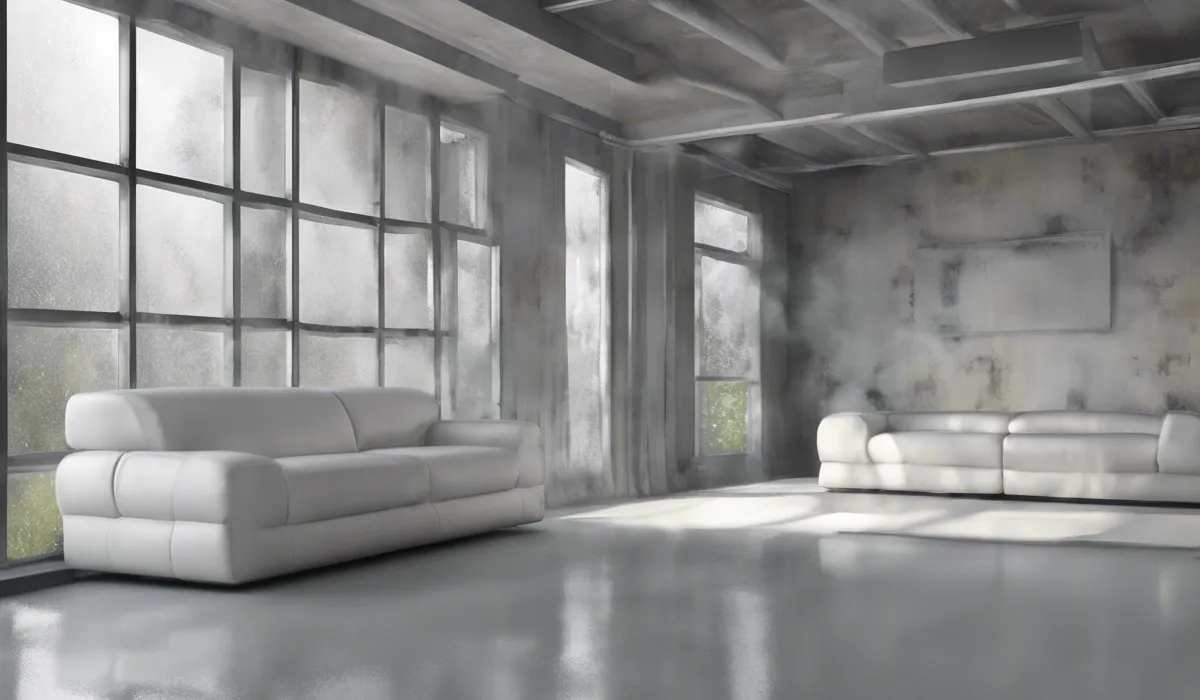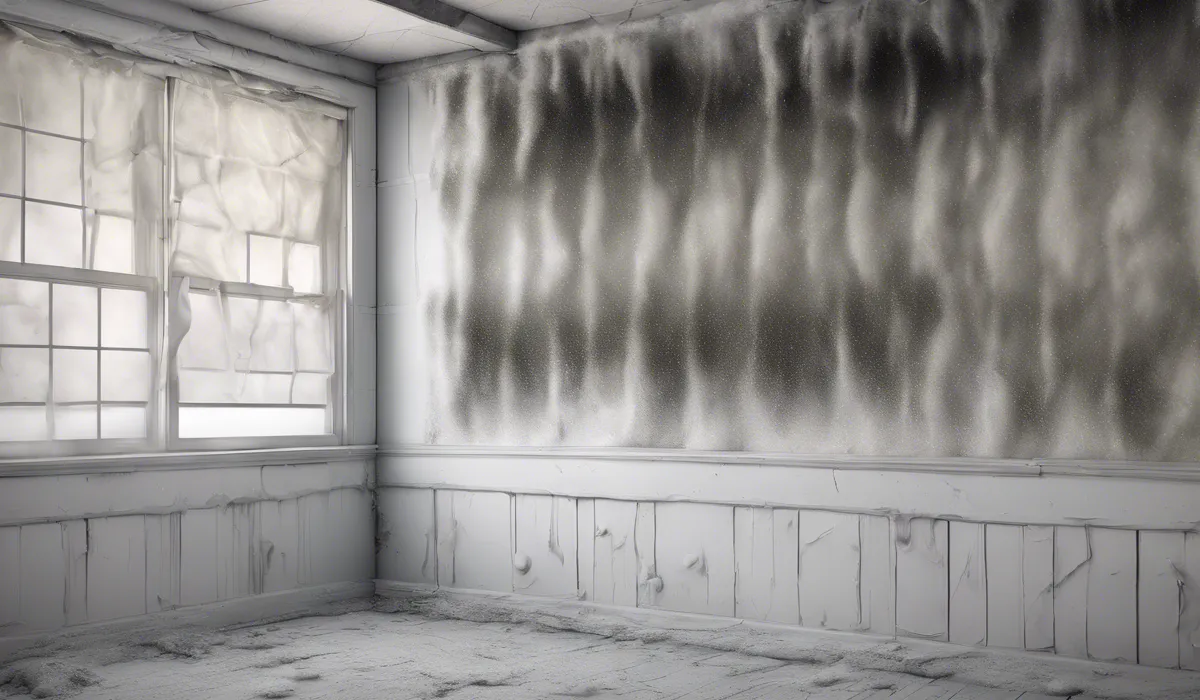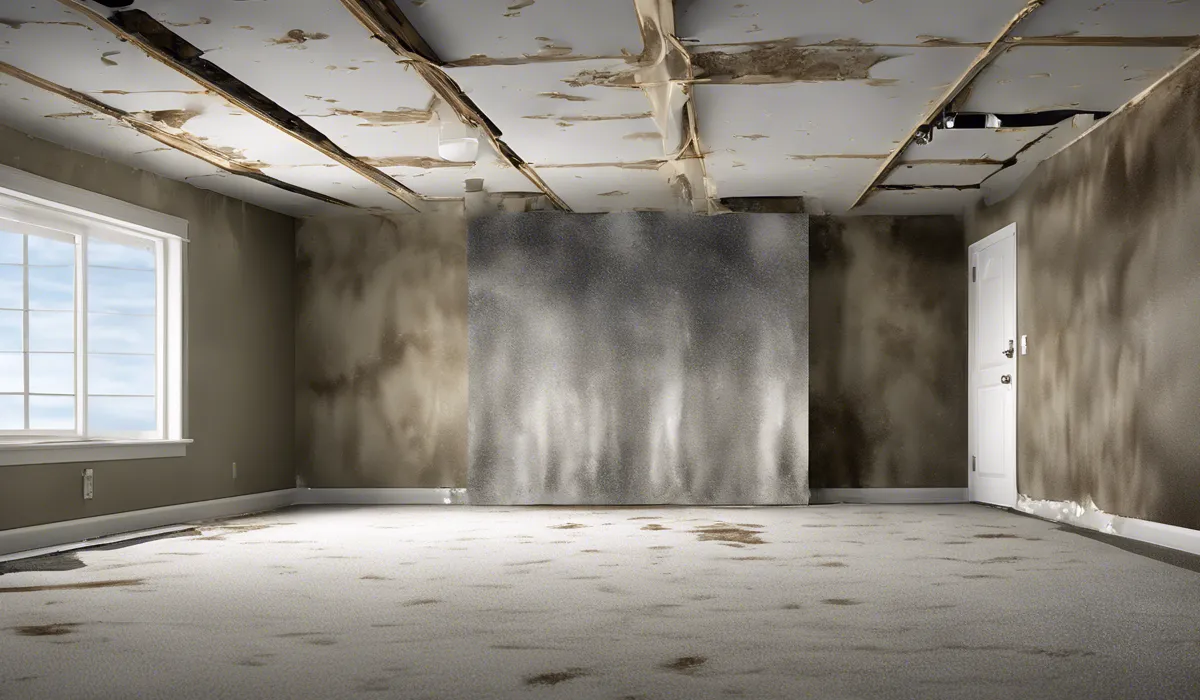Vapor barriers do not inherently cause mold. However, if installed incorrectly, they can trap moisture, creating conditions conducive to mold growth. Proper installation and ventilation are crucial to prevent moisture accumulation and mold.
Understanding Vapor Barriers and Moisture Control

What Are Vapor Barriers?
Vapor barriers are materials used to prevent moisture from passing through walls, ceilings, and floors.
They are a critical component in building construction that helps to avoid dampness from seeping into the interior spaces.
A vapor barrier might be a plastic sheet, a coating applied to a surface, or a barrier built into a material like insulation.
The Role in Construction
In construction, vapor barriers serve the essential purpose of protecting the structural integrity of buildings.
They are strategically placed in the building envelope to control the flow of moisture, thus preventing damage to materials and contributing to a comfortable indoor environment.
Controlling Moisture with Vapor Barriers
Vapor barriers work by creating a resistant surface that moisture cannot easily penetrate.
This is vital for preventing the buildup of condensation within walls, which can lead to rot, mold, and a decline in thermal performance.
Different Types and Uses
There are various types of vapor barriers, such as polyethylene sheets, foil-faced kraft paper, and metallic foil, each suited for different applications.
For example, foil-faced barriers are often used in attics to reflect heat as well as control moisture.
Importance of Proper Installation
Correct installation of vapor barriers is crucial. If not installed properly, they can trap moisture in the wrong places, leading to issues such as mold growth.
It requires careful sealing around openings and overlaps to ensure a continuous barrier.
Relationship Between Vapor Barriers and Mold Growth

Conditions Leading to Mold
Mold thrives in damp, warm, and poorly ventilated environments. When moisture accumulates, it creates the perfect conditions for mold spores to grow and spread.
Managing indoor humidity is therefore essential to prevent mold.
Improper Use of Vapor Barriers
If a vapor barrier is incorrectly placed on the warm side of insulation in a cold climate, for instance, it can trap moisture and lead to mold.
Conversely, in hot and humid climates, placing the barrier on the exterior could have the same effect.
Real-World Mold Issues
There are many cases where buildings have suffered mold problems due to vapor barrier mishaps.
For example, a school in a northern climate discovered mold growth after a vapor barrier was installed without regard for the local weather conditions.
Understanding Condensation and Moisture
The science behind condensation reveals that when warm, moist air contacts a cooler surface, it can result in water droplets forming.
This moisture can accumulate over time, especially if there’s no way for it to escape.
Vapor Barriers and Ventilation Balance
A well-designed building includes a balance between the use of vapor barriers and adequate ventilation.
This ensures that any moisture that does enter can exit without causing damage.
Best Practices to Prevent Mold When Using Vapor Barriers

Tips for Proper Installation
To install vapor barriers correctly, ensure that they cover the entire area without gaps and that they’re sealed around penetrations like pipes and wires.
The right choice of materials and careful installation can make a significant difference.
Ensuring Adequate Ventilation
Ventilation systems like HRVs (Heat Recovery Ventilators) or ERVs (Energy Recovery Ventilators) can help regulate indoor air quality by exchanging inside air with fresh outdoor air, which helps to prevent mold.
Assessing Climate Conditions
Before installing a vapor barrier, it’s essential to consider the local climate. For example, in a cold climate, the vapor barrier usually goes on the inside of the insulation, while in hot and humid climates, it often goes on the outside.
Maintenance and Inspection
Regular checks for leaks, condensation, and other signs of moisture can help catch problems early.
It is also vital to inspect vapor barriers for any tears or damage that may compromise their effectiveness.
Alternatives for Moisture Control
In some cases, alternatives such as breathable water-resistant barriers or smart vapor retarders, which adapt to humidity levels, may be more appropriate than traditional vapor barriers for controlling moisture.
FAQs About Vapor Barriers and Mold
Do vapor barriers directly cause mold to grow in homes?
No, vapor barriers do not inherently cause mold. Their purpose is to prevent moisture passage.
Can improper installation of vapor barriers lead to mold problems?
Yes, if vapor barriers are installed incorrectly, they can trap moisture and create conditions that are conducive to mold growth.
Is ventilation important when using vapor barriers to prevent mold?
Proper ventilation is crucial in conjunction with vapor barriers to prevent moisture accumulation and subsequent mold growth.
What should be considered to ensure vapor barriers do not contribute to mold growth?
Correct installation, adequate ventilation, and moisture management should be considered to ensure vapor barriers do not contribute to mold growth.
Are there certain areas in a home where vapor barriers are more likely to cause mold issues?
Areas with high moisture levels, such as basements and bathrooms, are more prone to mold issues if vapor barriers are not properly installed and ventilated.
Final Thoughts
Vapor barriers themselves are not the originators of mold. The crux of the issue lies in their installation and the overall management of moisture.
If not implemented correctly, they can indeed become culprits in trapping moisture, thus fostering an environment where mold can thrive.
Ensuring proper installation and adequate ventilation is key to mitigating this risk and maintaining a mold-free space.
